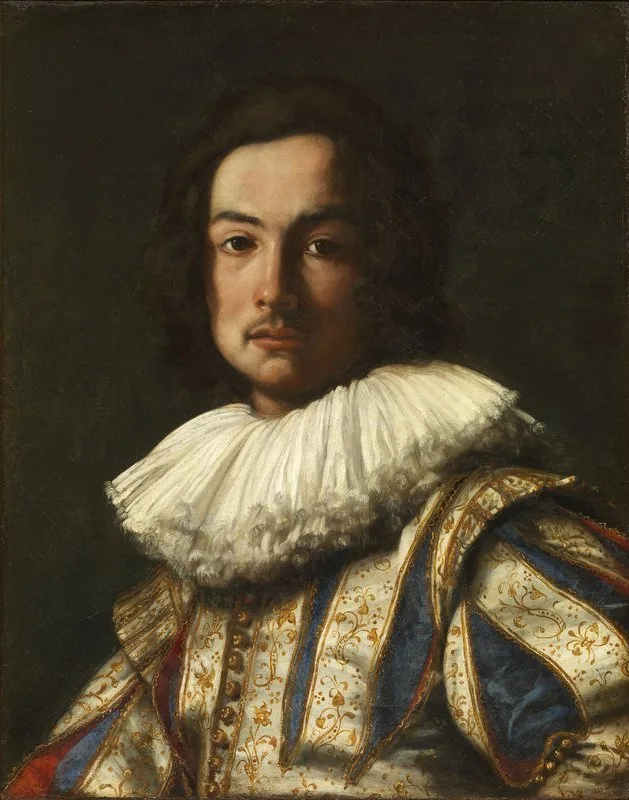
1610–1664
Movements
Occupations
Stefano della Bella (1610-1664) was one of the most prolific and versatile printmakers of the Italian Baroque period, leaving behind 1,052 prints and several thousand drawings that captured the vivid essence of 17th-century European life. Born in Florence on May 18, 1610, to a family of artists, he trained initially as a goldsmith before studying painting under Cesare Dandini and etching under Remigio Cantagallina. His early work showed the strong influence of Jacques Callot, though he developed a distinctive voice that bridged Italian Baroque grandeur with Northern European atmospheric delicacy. Under Medici patronage, della Bella worked in Rome (1633-1639) and spent a transformative decade in Paris (1639-1650), where Cardinals Richelieu and Mazarin commissioned major works. His 1647 visit to Amsterdam exposed him to Rembrandt's innovations, profoundly influencing his later atmospheric style. Returning to Florence in 1650, he continued producing innovative prints until a stroke curtailed his output in 1661. Della Bella's legacy endures through his masterful etchings of military spectacles, court ceremonies, urban landscapes, and fantastical ornamental designs that anticipated the Rococo movement.
Born May 18, 1610, in Florence to an artistic family; his father Francesco della Bella was a sculptor in Giambologna's studio who died when Stefano was young
Apprenticed initially as a goldsmith, following in the footsteps of his brothers who trained in various artistic specialties (goldsmith, metalsmith, sculptor, painter)
Studied painting under Florentine painter Cesare Dandini, then etching under Remigio Cantagallina, who had also trained Jacques Callot
At age seventeen (1627), gained Medici patronage by presenting an etching of a banquet at Palazzo Pitti to Giancarlo de' Medici
Early prints closely mimicked Callot's Mannerist style before developing his own distinctive approach featuring crisp calligraphy and Baroque elements, evident in works like the Banquet of the Piacevoli
Resided at the Medici Palace in Rome for six years, producing vedute and drawings of antiquities and public occasions recorded in sketchbooks that were later turned into prints
Created a monumental series of six prints forming a 2.5-meter panel showing the Polish Ambassador's Ceremonial Entry into Rome (1633)
Produced numerous prints of Roman views, capturing ruins and street scenes while assisting with Medici court festivities
Style evolved from Mannerist to Baroque during this period, influenced by exposure to Jacques Callot, Giulio Parigi, and Remigio Cantagallina
In 1632, created the figure of Copernicus for Galileo Galilei's Dialogo sopra i due massimi sistemi, establishing his reputation for scientific illustration
Accompanied the Medici ambassador to Paris in 1639, working under the name Etienne de la Belle and adapting his style to French tastes
Commissioned by Cardinal Richelieu to document the 1641 siege of Arras, producing detailed military scenes that demonstrated his mastery of crowded compositions
Created four sets of educational playing cards for young Louis XIV in 1644 at Cardinal Mazarin's request, working with French engravers and publishers like Israël Henriet and François Langlois
Produced his famous engraving of the Pont Neuf featuring 451 distinct figures including beggars, gypsies, hurdy-gurdy players, children, and animals, showcasing exceptional facility with varied tone and intricate detail
Traveled to Amsterdam in 1647, where he met Rembrandt, studied Dutch art at its source, and created Views of seaports series; acquired Rembrandt etchings from François Langlois in 1642 and served as an important mediator of Rembrandt's influence to Italian and French art
Returned to Florence in 1650 but continued sending plates and prints to Parisian publishers while remaining on the Medici payroll through Prince Mattias de' Medici
Served as drawing teacher to Cosimo III, the nephew of Prince Mattias and son of Grand Duke Ferdinand II, demonstrating his standing in Florentine court circles
Experimented with tonal effects attempting to replicate the atmospheric qualities of his wash drawings in etching, using dilute acid washes to create delicate tonal areas in a technique predating true aquatint
Created innovative ornamental prints including Nouvelles inventions de Cartouches (1647) and Ornamenti o grottesche (c.1653), featuring fantastical designs with fauns, mermaids, camel heads, and botanical forms that looked forward to the Rococo
Suffered a stroke in 1661 that curtailed his output, though late works showed continued technical innovation; died in Florence on July 12, 1664
Artheon Research Team
Last updated: 2025-11-28
Biography length: ~1,847 words
Wikidata/Wikimedia Commons